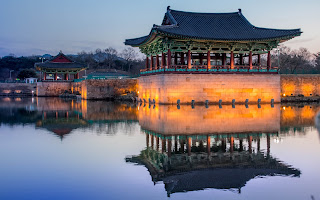Yangdong Folk Village-UNESCO World Heritage Site #117

After a breezing 30 minute ride from the Geongju city center, we arrived at the Yangdong Folk Village (Yangdong Village of Gyeongju), a traditional village from the Joseon Dynasty. It is located in Gangdong-myeon, sixteen kilometers northeast of Gyeongju, South Korea, along the Hyeongsan River. Mt. Seolchang stands to the north of the village. The village is designated as Important Folklore Materials No. 189 by the South Korean government. The size, degree of preservation, numerous cultural assets, traditionalism, beautiful natural setting all contribute to the importance of Yangdong Village. It is also a fine example of the yangban (Korean aristocracy) lifestyle and Neo-Confucian traditions. The village is listed by the South Korean government with UNESCO as world heritage site with Hahoe folk village in 2010.

